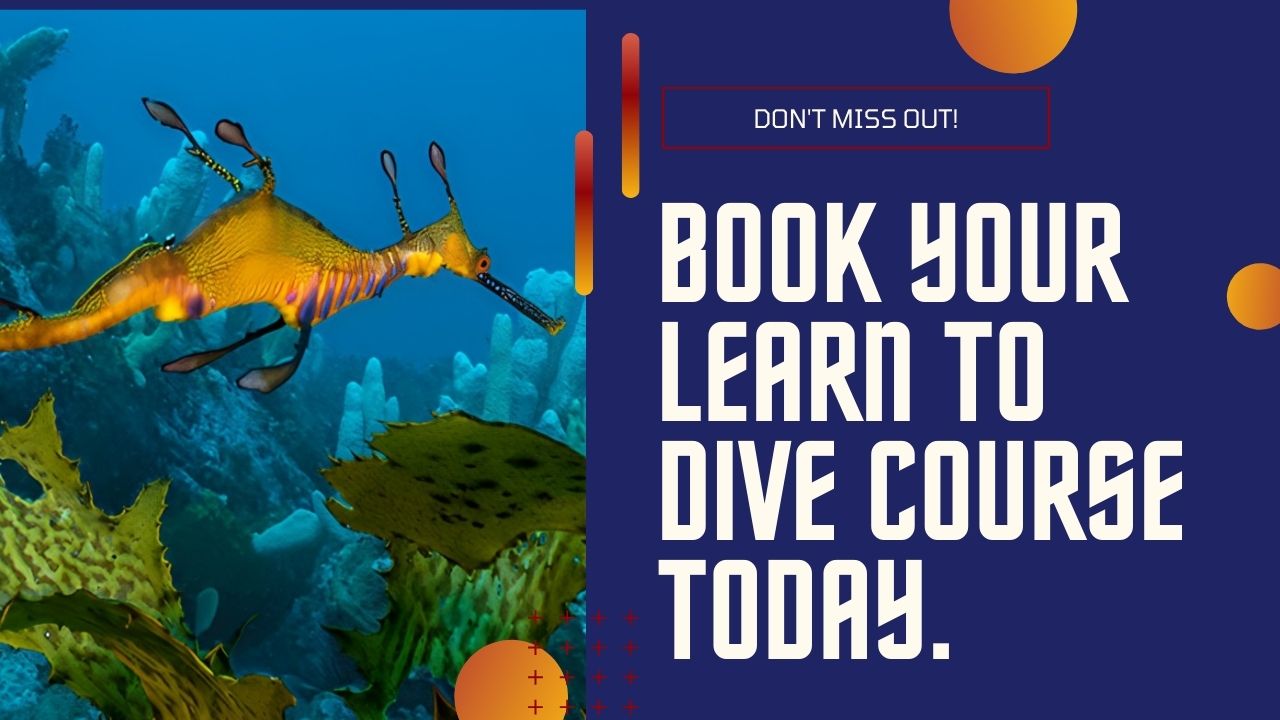You have 0 product(s) in your cart.
Abyss Scuba Diving
The Ultimate Guide To Diving In Tasmania : Explore The Depths
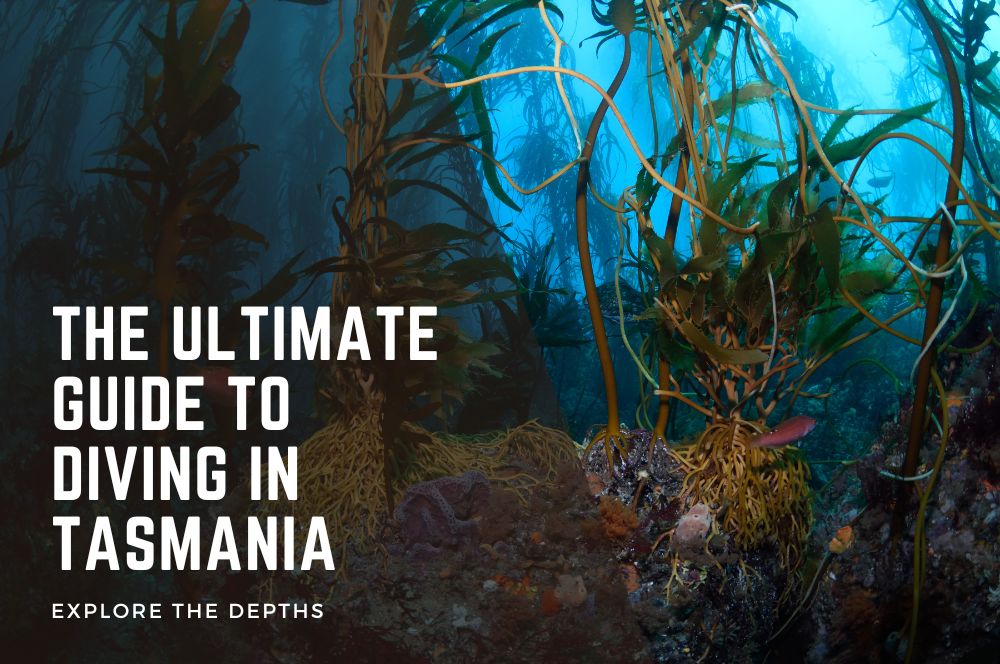
Explore the Depths: The Ultimate Guide to Diving in Tasmania
Why dive in Tasmania? This is where vibrant marine habitats meet historic sunken treasures. Begin your undersea exploration with our guide to diving in Tasmania. Tasmania’s dive sites—home to kelp forests, shipwrecks, and underwater mountains teeming with life—are perfect for diving enthusiasts.
Key Takeaways
-
Tasmania’s diving scene boasts unique marine environments like kelp forests and historic wrecks, offering diverse underwater experiences for different skill levels.
-
Seasonal changes in Tasmania provide varying diving conditions, with warmer summer waters making it ideal for beginners and clearer winter waters attracting unique marine species, suited for experienced divers in thermal protection suits.
-
Multiple top-tier diving centres across Tasmania provide quality equipment rental, PADI-certified courses, and guided trips, positioning the island as an accessible hub for both novice and seasoned divers.
Discover Tasmania's Marine Treasures
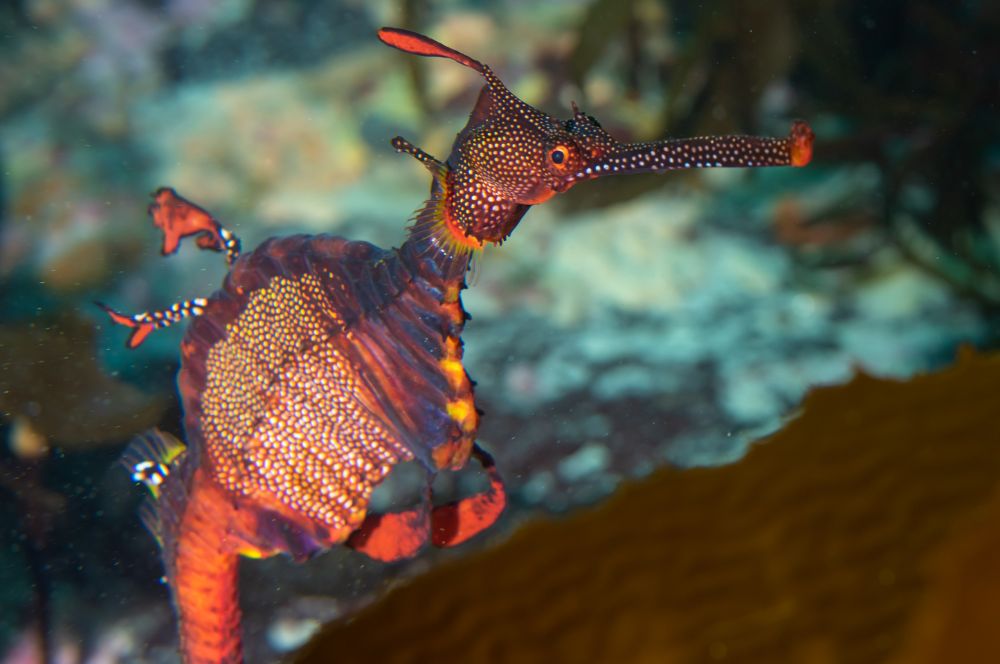
Dive Tasmania, and you dive into a world teeming with unparalleled ecosystems and breathtaking beauty. Tasmania’s cool, nutrient-rich waters of the Southern Ocean nurture a spectacular variety of marine life, including:
-
vast kelp forests
-
seagrass meadows
-
extensive coral reefs
-
sponge gardens
Imagine gliding through the water, surrounded by a kaleidoscope of aquatic flora and fauna. Tasmania is undoubtedly a must-visit destination for divers worldwide.
With Governor’s Island Marine Reserve and sites like the SS Nord offering a direct line to the island state’s marine diversity, diving Tasmania is an experience that carves a permanent place in your memories.
Governor's Island Marine Reserve
At Governor’s Island Marine Reserve, each dive is an adventure into the unknown. The world famous Magic Garden, Golden Bommies, and The Hairy Wall stand as underwater landmarks in this marine reserve, where the intricate dance of marine life enchants divers of all levels. Picture yourself weaving through the Golden Bommies, two grand granite monoliths, as yellow zoanthids, sea whips, and schools of fish swirl in a burst of colours around you. Or drift alongside The Hairy Wall, a living tapestry of sponges, soft corals, and a diverse cast of reef fish and invertebrates.
The Castle and Canyon dive sites continue this underwater saga, with sea anemones gripping boulders and overhangs, creating a mystical setting akin to a submerged fairy-tale kingdom. Descend into the Valley floor of the Canyon, at a depth of 35 meters, and you’re met with vibrant sponges, hydroids, and the curious gaze of rock lobsters and sea spiders. The marine reserve’s diverse depths and geographical wonders, like the granite structures of the Golden Bommies and the boulders of The Castle, are a testament to the Governor’s Island Marine Reserve’s status as a treasure trove of diving experiences.
Maria Island
Maria Island is a sanctuary where the water itself seems to extend a warm invitation to those who seek tranquility beneath its surface. With outstanding visibility and shallow waters, it’s an aquatic playground for snorkelers and beginner divers alike.
The island’s crystal clear waters are a canvas for nature’s artistry, where playful seals and curious dolphins regularly make appearances, delighting those fortunate enough to witness their aquatic ballet.
Tasman Peninsula
For those who prefer their dives to be seasoned with mystery and wonder, the Tasman Peninsula serves as the perfect backdrop. With Cathedral Cave and Sisters Rocks providing the stage, divers are treated to a performance of underwater marvels that is as unique as it is captivating, including the exploration of sea caves. Cathedral Cave, located in the scenic waterfall bay on the north-east tip of the Tasman Peninsula, boasts a massive entrance and is interconnected with smaller caverns, tunnels, and crossed passages, making it a stand-alone epic dive site.
Here, amidst the dramatic landscape, you might find yourself floating alongside the elegant weedy sea dragons, a species as mystical as the environment they inhabit.
Iconic Dive Sites in Tasmania
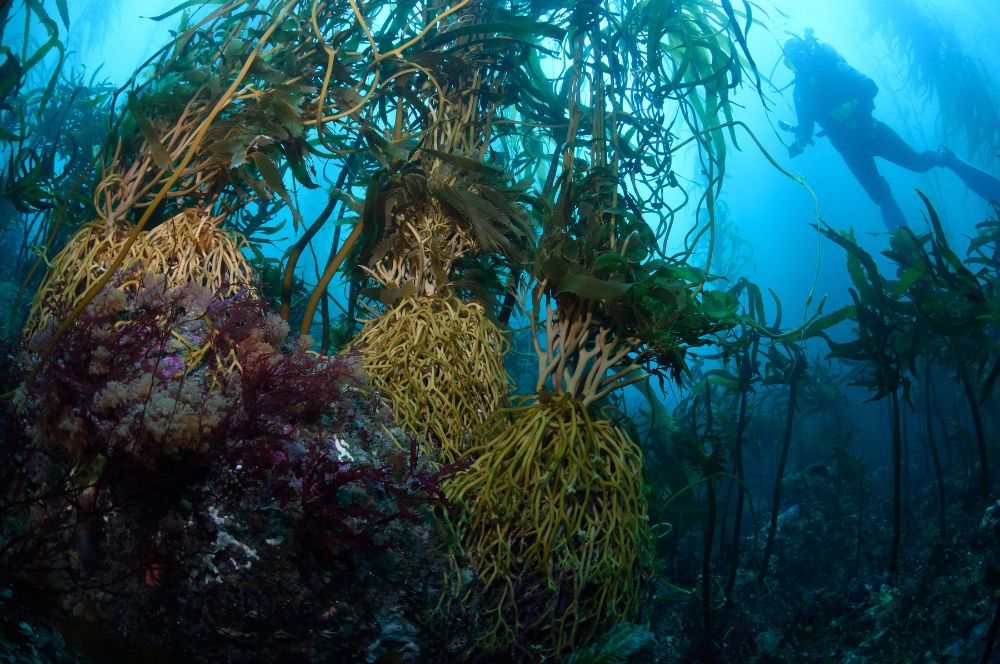
Tasmania’s diving portfolio includes:
-
The SS Nord wreck, a dive suitable for those with advanced skills, promises an encounter with the past
-
The enigmatic Mount Everest
-
The Giant Kelp Forest
These sites beckon with their unique underwater experiences and a chance to commune with marine life, including humpback whales.
For the intrepid, Paterson’s Arches await, providing a passage through canyons and swim-throughs that will challenge and delight in equal measure.
Giant Kelp Forest
As you submerge into the Giant Kelp Forest of Fortescue Bay, a sense of enchantment envelopes you. The towering kelp creates an otherworldly atmosphere, like soaring through an ancient, underwater forest. This unique shore dive, nestled within the Tasman National Park, is a haven for a plethora of marine species, such as:
-
the enigmatic weedy sea dragons
-
vibrant sea stars
-
the draught board sharks
-
the occasional visit from playful seals
SS Nord Wreck Dive
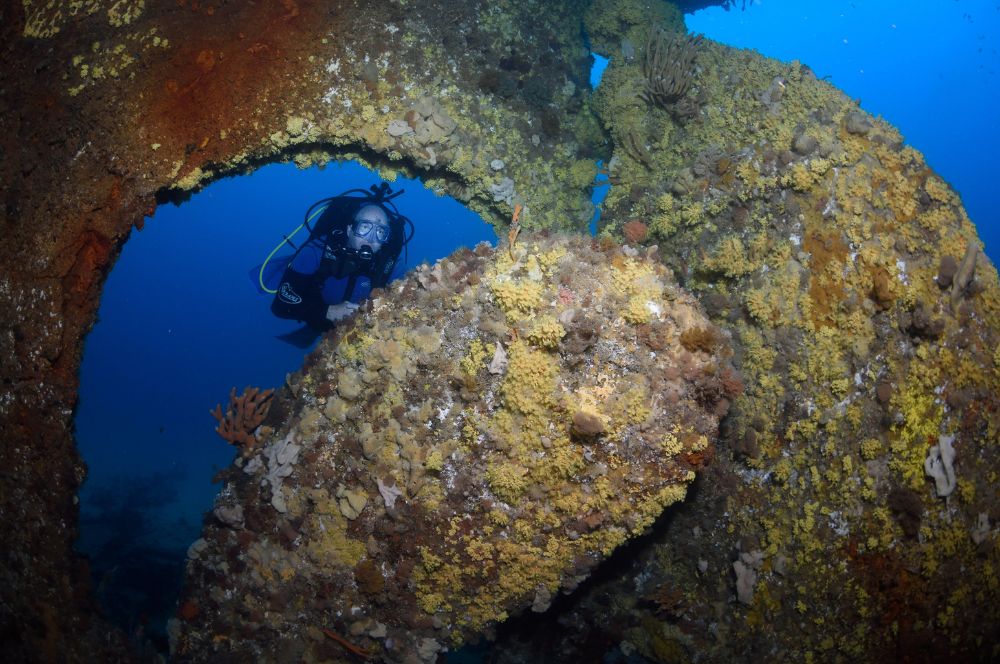
The SS Nord wreck is an advanced diver’s dream, a watery grave that sits at a depth range of 20 to 45 meters, offering a glimpse into the maritime history with artifacts strewn across the ocean floor. With strong currents and visibility that can stretch from 15 to 30 meters, this protected site near Tasman Island is a thrilling dive, where the remnants of the 1,840-ton steamship reveal secrets of the deep, including its triple expansion steam engine and two boilers.
Mount Everest
Mount Everest, not the towering giant of the Himalayas but the submerged pinnacle within the Governor’s Island Marine Reserve, rises from a depth of forty meters to just five below the surface. This site is a bustling metropolis for marine life, where striped trumpeters play their symphony and the possibility of spotting Southern Right Whales or dolphins is always on the horizon.
Paterson's Arches
Dive into the mesmerising world of Paterson’s Arches, where experienced divers are challenged and rewarded with an intricate maze of canyons, swim-throughs, and open-top cave walls. This site demands skill and buoyancy control, but those who navigate its depths are met with an underwater landscape rich in biodiversity and a thrill that is second to none.
Seasonal Diving in Tasmania
The allure of Tasmania’s dive sites is not static; it changes with the seasons, offering a different palette of experiences throughout the year. Water temperatures in Tasmania’s diving sites peak around 16.9°C in the summer months and drop to a chilly 12.7°C in winter, directly affecting visibility and the types of marine encounters divers can expect. The conditions are a testament to the island’s dynamic nature, where cold and deep waters provide a stage for a year-round diving spectacle that is as challenging as it is rewarding.
Summer Months
During the summer months, the water embraces divers with temperatures that can reach an average high of around 18.1°C, making the underwater realm a bit more welcoming. The East Coast offers day trips and speciality courses to make the most of the milder conditions, providing an ideal time for those just beginning their scuba diving journey or looking to expand their underwater skills.
Winter Months
But it’s the winter months that bring forth a different kind of magic in Tasmania. As temperatures drop to their lowest, averaging 12.7°C, the waters become a sanctuary for unique marine species that thrive in the cooler environment. With visibility that can exceed 40 meters, winter diving offers a clarity that summer cannot match, although it comes with the need for divers to be completely covered in at least a 7mm wetsuit with a hood and gloves, or a drysuit for those seeking the utmost in thermal protection.
Top Diving Centers in Tasmania

For those looking to dive into Tasmania’s underwater world, the island offers top-notch diving centres that are the gateways to these marine treasures. Go Dive Tasmania, Eaglehawk Dive Centre, and Tasmanian Divers Group stand out as the premier establishments, offering everything from comprehensive diving courses to guided dive trips and equipment rental.
These centres not only equip divers with the necessary gear and knowledge but also provide a community where divers can share experiences and learn from each other.
Go Dive Tasmania
Hobart’s Go Dive Tasmania offers:
-
A PADI-certified gateway to the island’s underwater realm
-
Diving courses for divers of all skill levels
-
Guided dive trips with experienced guides (additional fee)
And with an assortment of scuba and freediving gear available for rental, Go Dive Tasmania ensures that all divers, regardless of their experience, have access to high-quality equipment.
Eaglehawk Dive Centre
Nestled at Eaglehawk Neck, the Eaglehawk Dive Centre is a PADI 5 Star Dive Centre renowned for its expert guidance and diverse dive site offerings. Since 1991, the centre has been facilitating safe and exhilarating diving experiences, with a team that includes marine biologists providing invaluable insights into the local marine environment.
Their commitment to diver safety is evident in their:
-
PADI facility
-
Availability of Nitrox airfills, ensuring that divers have access to the most suitable air mixes for their dives
-
Custom-built pool for controlled training environments.
Tasmanian Divers Group
The Tasmanian Divers Group, with establishments in Launceston and Kingston, offers a comprehensive suite of diving services to meet the needs of both novice and experienced divers. PADI certified courses, equipment rental, and air fills are just a few of the amenities available, and membership with the group unlocks additional perks and exclusive website content.
Tips for First-Time Divers in Tasmania
For the uninitiated, the prospect of diving in Tasmania’s waters can be as daunting as it is exciting. Starting with an open water diver course is key to gaining the certification and confidence needed to dive up to 18 meters unsupervised, and a familiarity with the local diving environment is paramount for safety.
With a variety of dive sites suitable for different experience levels, it’s crucial for first-time divers to choose locations aligned with their training and abilities.
Water Conditions
Tasmania’s water conditions demand respect and preparation. With summer temperatures around 15°C and winter temperatures that can drop to about 11°C, divers need to adjust their gear and expectations accordingly. Some important considerations for diving in Tasmania include:
-
Adjusting gear and expectations for the colder water temperatures
-
Maintaining proper buoyancy by adjusting the amount of lead carried
-
Being aware of visibility conditions, which can reach up to 12 meters in the warmer months
By taking these factors into account, divers can have a safe and enjoyable diving experience in Tasmania.
For comfort, a minimum of a 7mm wetsuit with a hood and gloves is recommended, with many opting for drysuits during the colder winter months.
Diving Gear
To fully embrace the diving experiences Tasmania has to offer, having the right gear is non-negotiable. Some essential gear includes:
-
Wetsuit
-
Fins
-
Mask
-
Snorkel
Additional items like hoods, gloves, and enriched air nitrox for cold water diving are also recommended. While a 7 mm semidry suit or a drysuit may seem cumbersome at first, they are crucial for warmth and protection in Tasmania’s cooler waters.
Advanced options like enriched air nitrox offer extended bottom times and increased safety margins, ensuring a more fulfilling deep dive.
Summary
As we resurface from the depths of Tasmania’s wondrous dive sites, we’re reminded of the diversity and richness of the underwater experiences the island offers. From the enchanting Giant Kelp Forest to the historical SS Nord wreck, and the supportive community at the top diving centers, Tasmania stands as a beacon for divers worldwide. With the right preparation and respect for the seasonal conditions, the island’s marine treasures are yours to explore, leaving you with memories and stories as deep and vivid as the waters themselves.
Frequently Asked Questions
Is there good diving in Tasmania?
Yes, Tasmania offers some of the world's best temperate diving with clear waters, diverse marine life, and interesting underwater formations. It's a great destination for diving enthusiasts.
What is the best time of year to dive in Tasmania?
The best time to dive in Tasmania depends on your preferences. Summer offers warmer water for comfort and beginner divers while winter has exceptional visibility and unique marine life, though thicker wetsuits or drysuits are needed for protection.
Are there diving sites suitable for beginners in Tasmania?
Yes, Maria Island in Tasmania offers great diving sites suitable for beginners, with outstanding visibility and shallow waters providing a safe and comfortable environment to observe friendly marine life.
What kind of marine life can I expect to see in Tasmania?
You can expect to see a rich variety of marine life in Tasmania, including weedy sea dragons, draught board sharks, vibrant sea stars, seals, dolphins, and various fish species. Happy diving!
Do I need to bring my own diving gear to Tasmania?
No, you don't need to bring your own diving gear to Tasmania. The top diving centers in Tasmania offer gear rental services, providing everything you need for a safe and enjoyable dive experience.
RELATED POSTS
-
Top Spots for Scuba Diving in Australia:…
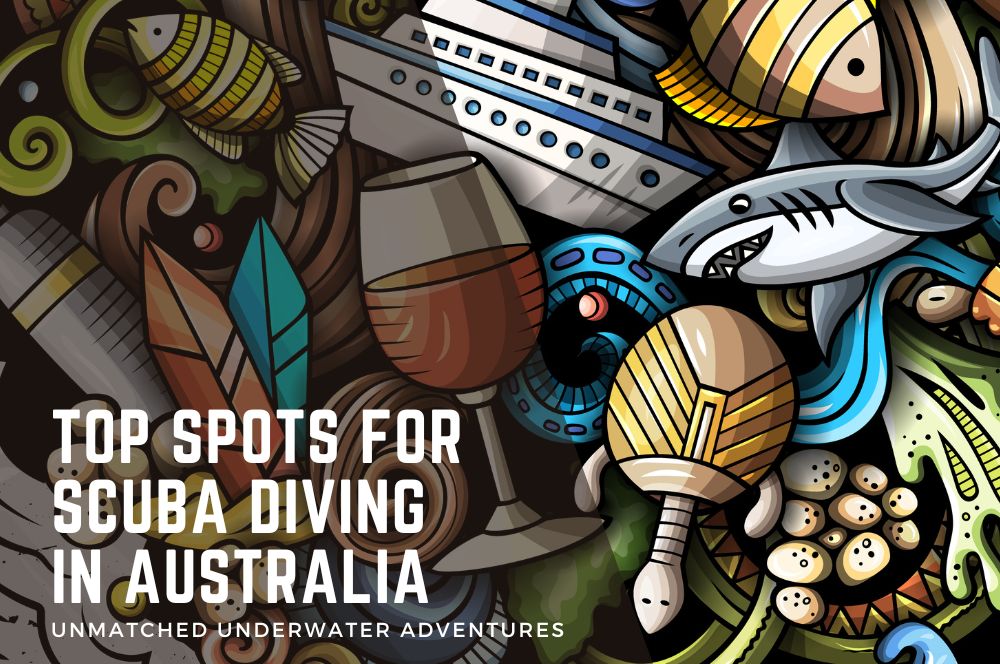
Top Spots for Scuba…
Top Spots for Scuba Diving in Australia: Unmatched Underwater Adventures Seeking the best scuba diving experiences? […] -
Explore Underwater Wonders: Your Ultimate…

Explore Underwater…
Explore Underwater Wonders: Your Ultimate Guide to Scuba Dive Gold Coast Discover the rich underwater world […] -
Explore the Aquatic Spectacle: Ultimate…
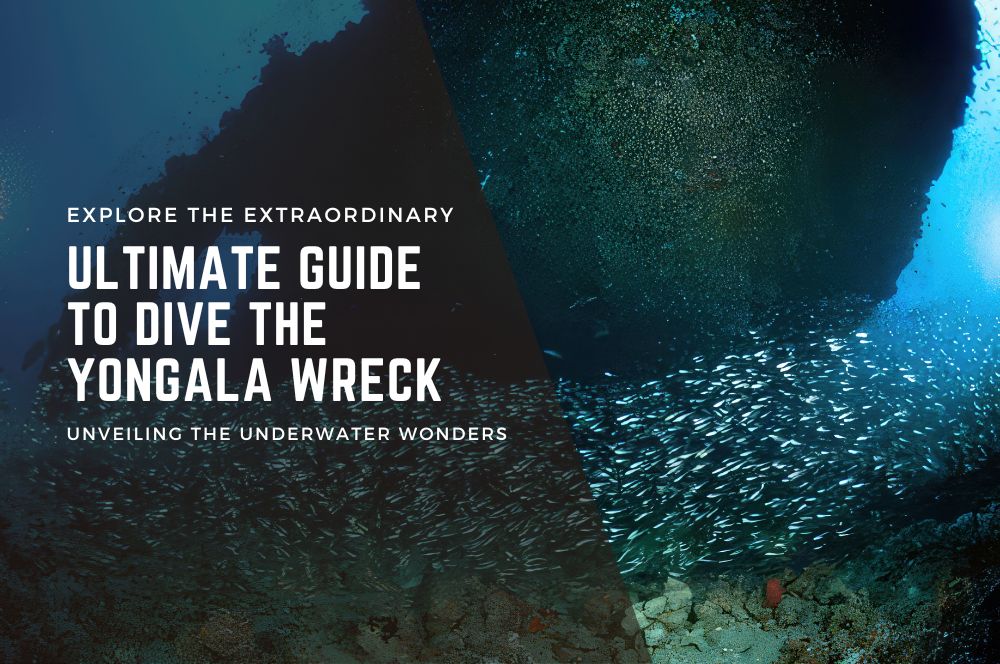
Explore the Aquatic…
Explore the Aquatic Spectacle: Ultimate Guide to Dive Yongala Wreck Plunging into the Dive Yongala experience […] -
Where to Scuba Dive in Australia: Uncovering…
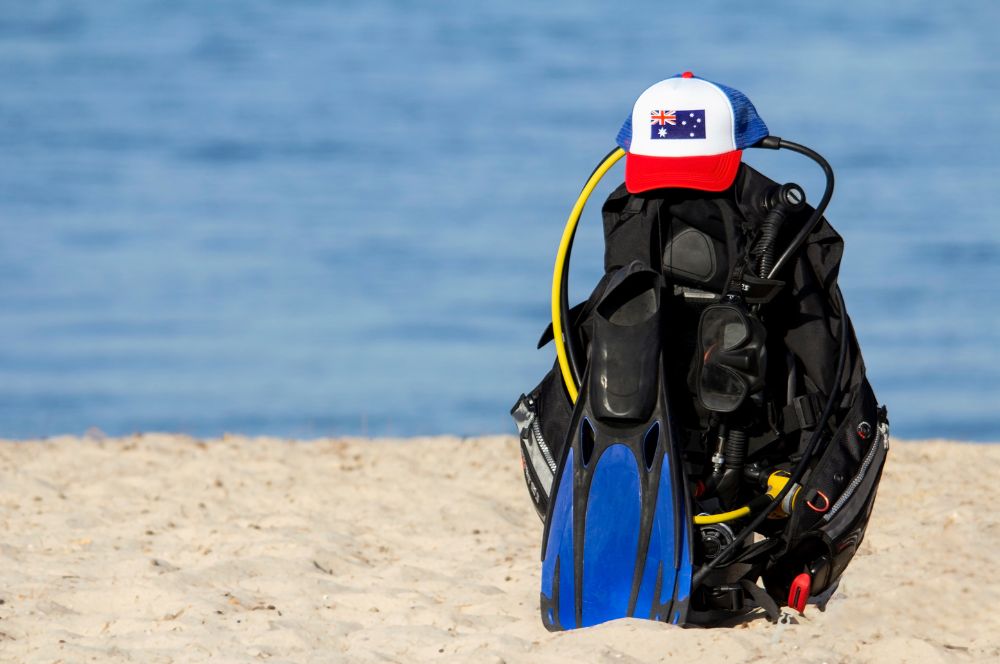
Where to Scuba Dive…
Where to Scuba Dive in Australia: Uncovering the Best Places Australia is an underwater paradise teeming […]
Recent Posts
